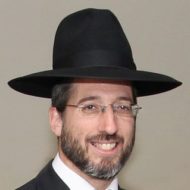
This week is TU BISHVAT the new year of trees. What lesson can we learn from a tree?
Every Jew has an obligation to believe in תחיתהמתים the resurrection of the righteous souls who have departed from this world. It is considered such a fundamental rule in the holy Torah that Rambam classifies it as one of the 13 fundamentals of faith, in Jewish law. And, one who denies this principle forfeits a place in the world to come. On the other hand those of us who believe it, will experience TechiyatHametim and thereby merit eternal life forever.
The first time we encounter the concept of eternal life, is in Gan Eden, the place that Adam and Chava used to dwell in. In the garden of Eden, there was a tree, called the tree of life. Radvaz says that if Adam would have chosen to eat from that tree instead of the tree of knowledge, he would have received eternal life.
Perhaps we can suggest that receiving eternal life would have been Adam’s fulfilment of TechiyatHametim. TechiyatHametim is the final destiny for mankind, and it signifies the eternal state, the ultimate achievement of the perfection of societies and the completion of the history of our universe. In other words, Adam’s sin in effect caused a delay in the ultimate historical journey to the state of TechiyatHametim.
Why does the holy Torah choose the symbol of a tree to teach this important idea?
The Talmud (Ta’anit) remind us that there 2 types of trees. The date-palm is a fruit-bearing tree that symbolizes the Tzaddik that is good for himself, and benefits the world because he has students, who are like his fruits. However, the Cedar tree is a non-fruit-bearing tree that is like the Tzaddick who is benefits himself, but not useful to society as he has no students.
Another Medrash teaches us that in the garden of Eden, the actual tree (the branches and bark) used to taste like its fruits. However, after the sin of Adam &Chava, the tree decided to change Hashem’s rule and stopped tasting like its fruits. Why is this so? And what does this teach us?
Perhaps we can suggest that before the sin of Adam &Chava, there was no concept of the fruit being separate to the tree, because they were one and the same thing.
The entire process of gestation, development and production did not need to exist. In other words the process and the result were the same. The Ramchal describes how it will be in the future world OlamHabbah. There will be no need any more to have a process, since there will be a constant state which is the results of our achievements. Our present existence is a world of action עולםהעבודה, but the future world is a world of reward עולםהשכר. A similar example is given in a Medrash, there won’t be a need for 9 months of pregnancy, and children will be born instantaneously.
The Torah states היוםלעשותם, today is to do (the mitzvoth). The Talmud (Avodah Zara) explains היוםלעשותםומחרלקבלשכרם, today (this world) is for doing, but tomorrow (the next world) is for receiving the reward.
We learn from this that the purpose of this world is to do. To keep Torah and Mitzvot, and to be productive in life, not to sit back and be inactive. However, the purpose of the world to come, is just to sit in the radiance of Hashem and enjoy the perfection of our actions. The Talmud (Kallah 2) says צדיקיםיושביםועטרותיהםבראשיהםונהניםמזיוהשכינה’ The righteous sit with their crowns on their head and bask in the radiance of the Divine Presence.
Another lesson we can learn from the tree example is as follows. We started by saying that every Jew must believe in the resurrection of the dead. After a person leaves this world their bodies lie in wait for the resurrection. This can be compared to a tree in the winter that appears dead. Yet in the summer it comes alive with fruit.
Adam &Chava were born to be eternal but when they sinned, they brought death into the world.
With this understanding, now we can answer why the tree decided to stopp tasting like the fruit. Since, now that we need the process of Torah and Mitzvot, the result will only come after the work is done. Therefore the tree will only produce its fruit after a process of gestation. Similarly we find that our Rabbis compare TechiyatHametim to a seed that seems dead, but when put into the ground to gestate, comes alive and produces an entire tree.
We can now see that TechyatHametim, the resurrection of the dead is not just an abstract idea that seems irrelevant to our lives, rather is reflects and describes our entire existence. It is a pathway and purpose of life that leads to an eternal future of a perfect existence, symbolized by the fruit.
Someone who does not realize this, misses the whole point of creation and why we are here. After the BeneiYisrael went through the splitting of the sea they sang a song of Shira with the words אזישיר, then they will sing. Rashi quotes the Talmud that learns out from here a proof for TechyatHametim.
We can learn out from this, that every deliverance from trouble is in effect, a celebration of the fruits of our suffering, of our labour and our efforts. The end result is the song, which expresses all the efforts of the process.
We sing Shira every day in the Shachrit prayer. One of the verses includes the words תביאמוותטעמו, bring us come to it and make taste it!
With our explanation above we can appreciate fully what these words mean.
Only after toiling and going through the process of our life, in this world, can we then reach the fruits of this world, which is only experienced in the next world. That’s why we sing תביאמוותטעמו, bring us come to it and make taste it!
And then our effort which like the tree, will taste just like the fruit, and we will once again reach eternity, since the fruit of the tree is everlasting life.
May this TuBishvat message be fulfilled in our days and we merit to experience the צמיחתהגאולה and the building of our holy city Yerushalayimבמהרהבימינואמן.







